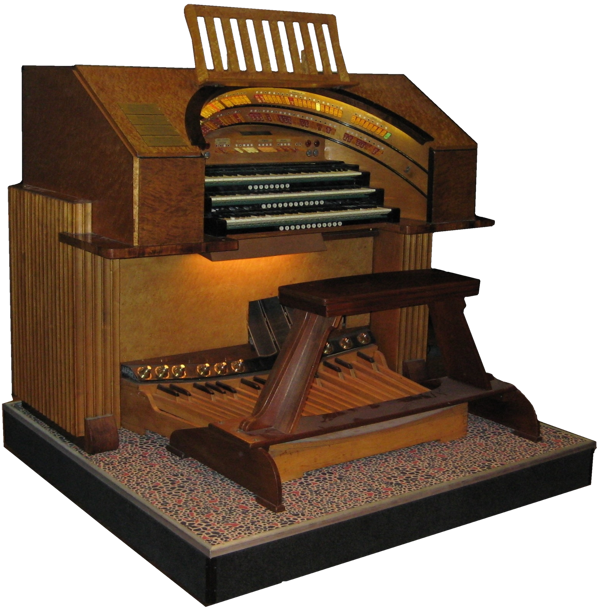
Jaap Keizerwaard's organ was very popular and famous, especially in the 1970s under the name 'Magic Organ'.
It was the time when more affordable electronic organs appeared in the living room.
This 'Magic Organ' was much more advanced in terms of electronics than the organs in our living rooms. It had three manuals/keyboards.
And it produced superior, magical sounds thanks to an enormous number of registers and other possibilities.
The brain behind this organ was Jaap Keizerwaard.
An electrical engineer in heart and soul who had the passion to create a special organ of his own.
Jaap Keizerwaard sadly passed away on February 9, 2019 at the age of almost 90.
 |
 |
| Jaap at his own made organ | Jaap Keizerwaard and Cor Steyn |
Jaap Keizerwaard and the Magic Organ
At the age of eighteen, Jaap had a diploma in radio engineering. At that time he was already engaged in electronic experiments and that mainly concerned tone generators and other electronic musical instruments. At the early days there were famous Accordion artists called "De kermisklanten". Henny and Coby had a large number of successes with their accordion music. Characteristic was the tone that echoed so beautifully in their music. That was their calling card. This tone was also designed and made at a young age by Jaap Keizerwaard.
Jaap was one of the first electronic organ builders. The first builder of an - much smaller in design - electronic organ in the Netherlands was a certain Mr. Van Vrijberghe de Coningh.
The first organ that Jaap built was an organ with two manuals. It was the time that the Eminent factory also started working with electronic organs. Jaap's first organ was once heard in 1959 in the NCRV program “My Hobby”.
But when Jaap had finished this organ, he soon wanted to build a bigger organ. An organ with more possibilities and with at least three manuals. The first organ was sold to a private individual.
Jaap's great inspiration went to a theater organ, but in electronic form. A real theater organ with pipes, toy counter and other percussion instruments was not going to fit in the house and that was not what Jaap was about. Electronics, that's what it had to be. His visit to the famous English seaside resort of Blackpool, in particular, where the equally famous Reginald Dixon played on the theatrical organ in the Tower Ballroom, made Jaap even more enthusiastic than he already was for his plan.

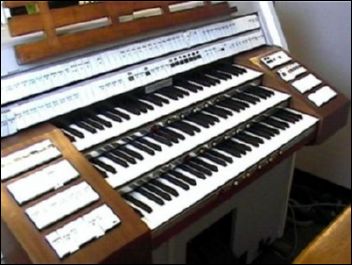
The idea of what the 3-manual organ should look like grew. In order to realize this, almost everything had to be made by hand. Many parts were not for sale or not easy to find. It was not yet the time when you could order everything 'online'. And that illustrates once again how in the past you had to perform many more actions to realize ideas.
For example, all keys are individually sawn, filed, polished, etc. from solid perspex.
No machines that did it for a while. Wooden keys, as most organs had, was not an option.
Of course, the keys also had to be attached to metal brackets. These were also designed by Jaap. It took him more than a year to complete the three manuals alone. The work had to be done in free time. Jaap owned an electronics store with his father, which required hard work.
In 1963 the organ was finally ready to play and could really be used. Jaap never really thought the organ was ready: he kept working on improving it further and further.
Cor Steyn and the Magic Organ
The fame of the organ started when a music distributor from Veenendaal heard the organ. He was so enthusiastic that he promised Jaap that he would do his best to invite the then nationally known Cor Steyn to play on this organ .
Jaap had always hoped for this, but such a celebrity as Cor Steyn seemed a bit ambitious to him. And yet it really happened. Because Cor Steyn came by! Together with producer John Möring from record company Bovema.
Cor Steyn later admitted that he originally came in a bit sober. He had played on experiments more than once. But he had also thought here: "Who knows what it is". And when Cor saw the organ and started playing it, he soon found out that this was indeed something special. He was even so enthusiastic that appointments were made the same afternoon to make an LP with the organ. Within a month this album was already for sale in the store.
It was quite an exciting time for Jaap: on the way to the VARA studio in Hilversum with the organ. “I will bring the organ that Cor Steyn will play on”, Jaap would say as a young man.
"How is that possible, that boy is bringing an organ? It can never be better than the organs we have in the studio," he heard many people thinking.
But they soon came back from that when Cor started playing the organ. Programs with the organ were immediately recorded for a week.
Shortly afterwards, recordings followed with Cor Steyn and none other than Tom Manders, alias 'Dorus' in the “Saint Germain des Pres” in Amsterdam. That is also where the organ gained the most fame, Dorus has given many wonderful shows with “Mister Steyn” as musical accompanist.
Who doesn't remember the famous “Dans om de Rinkelbom”? It was the time when the organ was renamed "Magic Organ" and was used for performances at home and abroad (including Munich).
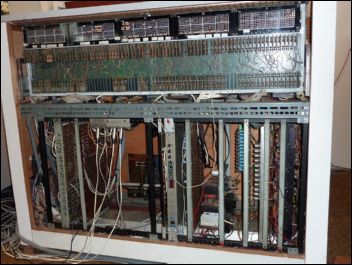
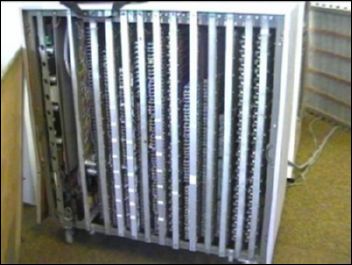
On November 17, 1965, Cor Steyn died suddenly of a heart attack. This was also a huge shock for Jaap. He had to leave the organ alone for a while. That's how much the Magic Organ had become Cor Steyn's organ. Jaap had owed a lot to Cor and wanted to pause. For the time being, no one was allowed to play the organ anymore.
It was not until some time later, when Jaap had become more at ease with the situation, that there were other well-known organists who played the organ. Reginald Dixon, Bernard Drukker, Stef Meeder, Joop Walvis and Jan van Weelden have also made recordings with the organ.
When the organ was also used for large community singing events with Jan van Weelden as organist, among others, Jaap decided to make the organ suitable for this classic use as well.
Jan van Weelden said about the organ: “It is a unique organ in the Netherlands and perhaps even all over the world”.
Something about the specs
The Magic Organ, which was called the Keizerwaard Organ again from that moment on, has always had an enormous volume. In addition, Jaap was very adamant that the sound should not be distorted at all. The organ was so powerful in its volume that during community singing events in the Jaarbeurs in Utrecht, the metal wall and ceiling plates vibrated and resonated.
Jaap has experimented for years with sounds and waves. He was always very critical and has therefore ensured that the organ has very special and pure sounds. Most organs - even today - have register sounds that have a few different pitches.
Think of 16-foot, 8-foot, 4-foot (16”, 8”, 4”) and the better organs also knew the 5 1/3” and the 2 2/3”.
But Jaap went much further. For example, the Flute registers on the Magic Organ have 14 different options, i.e. the Flute 16”, 8”, 4”, 2 2/3”, 2”, 1 3/5”, 1 1/3”, 1 1/7”, 1”, 8/9”, 4/5” , 8/11", 2/3" and 1/2". On a piece of paper and with experiments, Jaap came up with these sounds. Very precise, considering the purity of the sound. So not just the pure pitch. But with real intonation work.
Another number: there are more than 900 transistors in the organ, or rather in the generator cabinet. The console became a "switch box" that gives all commands to the large box next to it. This generator cabinet received several large vertically standing modules with many PCBs, each with a lot of components on it.
Jaap proudly talks about the powerful power of the organ. A living room organ has an amplifier with sometimes two outputs. His organ received 18 sound amplifiers and 10 large loudspeaker boxes with huge speakers of 50 watts each.
Even the large foot pedal box was sent out with two separate amplifiers and two separate speakers.
The registers are very specifically distributed over the channels. Exactly calculated as Jaap wanted it.
It is divided in such a way that with combinations of sounds you got a very wide sound spectrum.
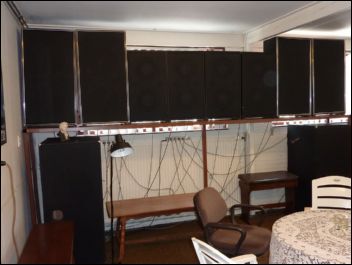
The organ is stuffed with tone generators, over 400 free running, all of which can be tuned separately. Thanks to this possibility, the organ can be tuned “pipe by pipe” just like an authentic theater organ.
The organ is still there.
It used to be in the former workshop next to Jaap's house in Berkel en Rodenrijs. English theater organists in particular regularly visited Jaap and his wife and then they always gladly took a seat on the organ bench of this fantastic organ.
However, time does not stand still: later years, for example, Jaap heard about the possibilities of 'Midi' on an organ. He found this an interesting addition and built the option of a Midi connection into the upper manual.
Jaap and his technical friends unanimously agreed. It is a nice addition, but it remains with that one manual. Because the Magic Organ must remain magical and retain its own character!
The organ now stands proudly in the "Beeld en Geluid" Museum in Hilversum.
Unfortunately, it can no longer be played by guests, but it is still lovingly maintained.

